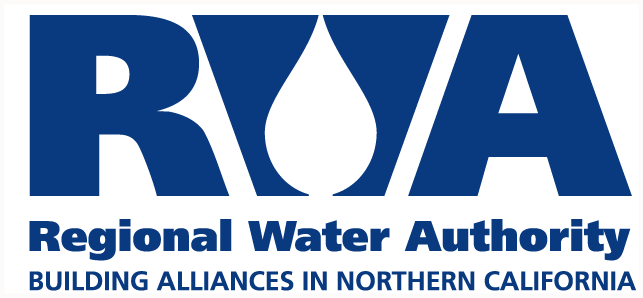ADOPTED 05-11-2009
All water users in California are mandated by the Constitution to put water to reasonable and beneficial use. Water providers in the Sacramento region recognize the need for all urban water users to use water wisely and efficiently, as well as the need for some regions and water suppliers to conserve water more aggressively to improve their water supply reliability and prepare for potential shortages. The Regional Water Authority, which represents 22 municipal and industrial water suppliers and affiliated agencies in the Sacramento region that serve more than a million people, urges that the following principles be incorporated into California’s water conservation and water use efficiency policies and legislation.
Promote Regional Self-Sufficiency
- Water conservation and water use efficiency programs are just a subset of water management tools supporting self-sufficiency. The Sacramento region has implemented a number of water
management strategies to become a prime example of the concept of regional self-sufficiency that is promoted in state water policy. - The need for improvement in water supply reliability for a given water supplier or region must be a primary consideration in determining an appropriate level of water use efficiency improvement.
- Assurances in California law (e.g., Water Code section 1011) that conserved water will benefit the conserving water rights holder must be fully recognized. State policy should re-affirm that
water use efficiency and water conservation actions will preserve, rather than diminish water rights.
Local and Regional Implementation
- Water efficiency and conservation programs will be most effective when planned and implemented at local and regional levels as a part of a comprehensive, integrated water management strategy (i.e., a “bottom-up” rather than “top-down” approach). The role of water conservation in achieving local and regional water supply reliability cannot be evaluated independently of other management actions.
- RWA supports the Governor’s call for a reduction in per capita urban water use by 2020 as a needed goal to promote action. However, a specific percentage reduction for any agency or
region should be identified at the local or regional level, based on local or regional needs and conditions.
One Size Does Not Fit All
- Any approach that seeks to identify specific water use targets must reflect the unique climate, land use, and quality of life of a given area, and must reflect the economic importance of
commercial, institutional, and industrial uses of water. Any approach that is founded on statewide average water use lacks this awareness of regional differences. - Any portion of urban water use that returns to the hydrologic region from which it originated should be reflected as a credit in meeting any quantitative water use requirements, thereby
recognizing the difference between local and regional uses of water and those that irretrievably export water from a region. The “net” water use from a region should be the basis for
comparison of water use in different parts of the state. - The significant investments of some water suppliers and regions in measures to improve water supply reliability, including recycled water, conjunctive use of surface water and groundwater, water conservation, use of remediated groundwater, and local storage must be taken into account when considering future water conservation requirements.
- Dependence on water imported from another hydrologic region requires, in some cases, greatly
increased energy use and potential greenhouse gas emissions, as well as higher economic
costs, and may result in greater environmental impacts and increased water supply uncertainty.
Costs and Benefits Must Be Proportionate
- More efficient water use by some water suppliers and their customers will result in benefits to other water users or the environment, in addition to the local benefit. The beneficiaries of such
additional water conservation should share proportionately in the costs. State requirements should not result in the local costs of water conservation measures exceeding the local benefits,
thereby redirecting economic impacts. - Funding incentives from the state and federal government have successfully accelerated the implementation of water efficiency measures throughout the state, and this should continue to
be a key tool the state uses to encourage additional reductions in water use. - Program administration and reporting should be simple for both state agencies and urban water
suppliers to manage.
Background
The issues and needs related to water use efficiency and conservation in California vary widely across the state. For example, many water users in California live in regions with limited local supplies, where water must be imported from great distances, with correspondingly high energy, economic, and environmental costs. Uncertainty of these imported supplies due to environmental constraints has resulted in reduced water supply reliability in recent years. Conversely, some parts of northern California, such as the Sacramento region, meet their needs entirely through local supplies and have expended many millions of dollars to develop and maintain water supply self-sufficiency. Much of the water used in the Sacramento region returns to local streams and rivers and benefits the environment or other water uses downstream.
The Sacramento region’s Water Forum Agreement, signed in 2000, was developed with the co-equal objectives of providing reliable water supplies to the year 2030 and preserving and protecting the lower American River ecosystem. Through the Water Forum, the Sacramento region has addressed water supply reliability (including water conservation and water use efficiency) and ecosystem protection in a comprehensive and collaborative manner. Water Conservation is one of the seven elements of the Agreement. Under the Water Forum Agreement’s conservation element, signatories in the Sacramento Region are implementing local and regional programs for all of the 14 CUWCC Best Management Practices.
The Regional Water Authority represents 22 water purveyor and affiliated agency members in Sacramento, Placer, El Dorado, and Yolo Counties.


